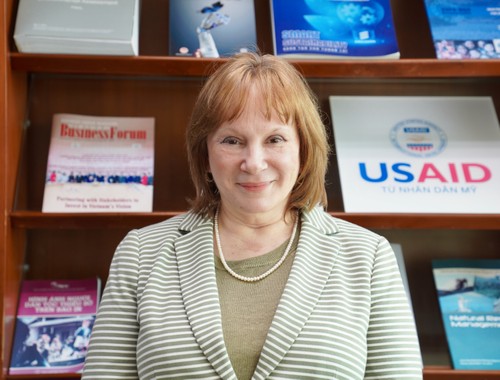Why is USAID interested in supporting Vietnam’s energy sector?
Economic growth in Vietnam has spurred a significant increase in electricity demand at a compound annual growth rate of 13% since 2000, and is projected to continue at eight percent through 2030. The country will need 8-10 billion USD annually in energy sector investment over the next decade to account for the increasing energy demand and forecasted energy shortages.
To help address these challenges, we at USAID are supporting Vietnam’s transition to a clean, secure and market-based energy sector by increasing the deployment of advanced energy systems, improving energy sector performance, and increasing competition in the energy sector.
As one of the world’s most vulnerable countries to the impacts of climate change, the Government of Vietnam prioritizes climate adaptation. Vietnam is keen to address growing emissions, and climate change is a top priority for the US government. We want to work together with Vietnam in the energy sector to help the country meet its energy security goals while lowering greenhouse gas emissions and increasing climate resiliency.
What are the goals of the Vietnam Low Emission Energy Program in the second phase and what will be done to achieve these goals?
Following the success of our Vietnam Low Emission Energy Program, or V-LEEP, phase I project, phase II will further support Vietnam’s transition to a clean, secure, and market-based energy sector.
We expect that by the end of 2025, V-LEEP II will help Vietnam bring 3,000 megawatts (MW) of advanced energy capacity to its national power grid – 1,000MW from combined cycle gas turbines and 2,000MW from renewable energy, including wind, solar, energy storage, and clean transportation solutions.
Achieving these targets means continuing signature policy initiatives, such as the Direct Power Purchase Agreement mechanism (known as DPPA), and implementation of the 8th National Power Development Plan. V-LEEP II will support Vietnam’s long-term energy planning by helping finalize and implement the Power Development Plan #8, focusing on improving data and analytical tools for decision making and formulating the annual implementation plan, which contains policies and regulations to transparently and effectively develop renewable energy projects.
V-LEEP II will also expand into new areas of partnership with private sector stakeholders to facilitate the financing of renewable energy and energy efficiency projects. We will provide support to private sector developers, domestic and international lenders, planners, and policy makers to improve the enabling environment for both new and existing projects.
 Ann Marie Yastishock, USAID/Vietnam Mission Director Ann Marie Yastishock, USAID/Vietnam Mission Director |
How will USAID help Vietnam implement the Direct Power Purchase Agreement mechanism?
The Direct Power Purchase Agreement mechanism enables large companies, such as Nike and Apple, to meet their global commitments to power their businesses with clean energy. It also creates a strong incentive for project developers to build more clean energy generation connected to the national power grid. USAID is working with the Ministry of Industry and Trade to launch the pilot DPPA program, which aims to attract 400MW- 1,000MW of solar and wind capacity. The pilot is expected to be implemented from 2022 to 2023, while we at USAID continue to work with the Ministry of Industry and Trade to scale up the program in the future. Our support includes: reviewing the legal framework, designing the DPPA model, coordinating with the private sector during the policy design process, preparing the necessary legal documents, and supporting participants during the implementation of the pilot phase. USAID has also facilitated the establishment of the Renewable Energy Buyers Alliance, a coalition of more than 100 large corporations committed to powering their operations and supply chains with renewable energy.
During the Pilot Program, V-LEEP II will also implement a monitoring and evaluation plan to understand implementation hurdles, and collect operations and project data in order to prepare for the scale up of the DPPA program.
What support will USAID provide to bankers, lenders, and clean energy developers under this project?
USAID sees the private sector as key for sustainability and lasting development progress. Building off its previous success mobilizing investment in over 300MW of clean energy projects, our private sector support through V-LEEP II aims to bring 2,000MW of new clean energy solutions to commercial operation.
V-LEEP II will work with private sector actors such as project developers, investors, and service providers to provide a range of support, including knowledge sharing, direct technical assistance, entrepreneurship support, and financial matchmaking.
Thank you for granting VOV this interview. That was Ms. Ann Marie Yastishock, USAID/Vietnam Mission Director.
The second phase of the Vietnam Low Emission Energy Program (V-LEEP II) was announced by US Vice President Kamala Harris during her visit to Vietnam last month.
The five-year 36-million-USD project is funded by the US Agency for International Development (USAID), aimed at accelerating Vietnam’s transition to a clean, secure, market-driven energy system.